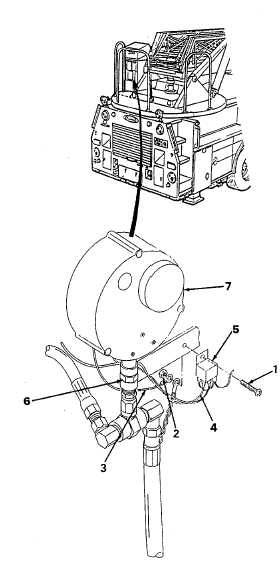|
| |
TM 5-4210-233-14&P-1
4-187. PRESSURE SENSOR GAUGE
THIS TASK COVERS:
a.
Removal
c.
Installation
b.
Cleaning and Inspection
TOOLS REOUIRED
EQUIPMENT CONDITION
Too[ Kit, General Mechanics, Automotive
Main Engine Shutdown (see para 2-12.)
(Appendix B, Section III, Item 1)
APU Shutdown (see para 2-16.)
Batteries Disconnected (see para 4-114.)
MATERIALSIPARTS REQUIRED
Dry Cleaning Solvent (Item 3, Appendix E)
Pipe Sealant (Item 2, Appendix E)
a.
Removal.
(1) Remove screw (1) and nut (2) disconnecting white
ground wire (3) from central stand bracket.
(2) Disconnect gauge black wire (4) from Bosch relay (5).
(3) Use open end wrench to unscrew 1/2" coupler (6) and
remove coupler (6) and gauge (7) as an assembly from
control stand bracket.
b.
Cleaning and Inspection.
WARNING
Dry cleaning solvent P-D-680 is potentially dangerous.
Avoid repeated and prolonged breathing of vapors and skin
contact with the liquid. Do not use near open flame, arcing
equipment or other ignition sources. Always wear eye
protection and protective clothing. The flash point of P-D-
680 is 100 to 138 deg F (30 to 50 deg. C).
(1) Clean gauge with a shop cloth dampened in dry
cleaning solvent (Item 3, Appendix E)
WARNING
Death or serious injury could occur if compressed air is
directed against the skin. Do not use compressed air for
cleaning or drying unless the pressure is/has been reduced
to 30 psi (2.11 kg/cm2) or less. When working with
compressed air, always use chip guards, eye protection and
other personal protective equipment.
(2) Dry gauge with compressed air.
4-480
|

